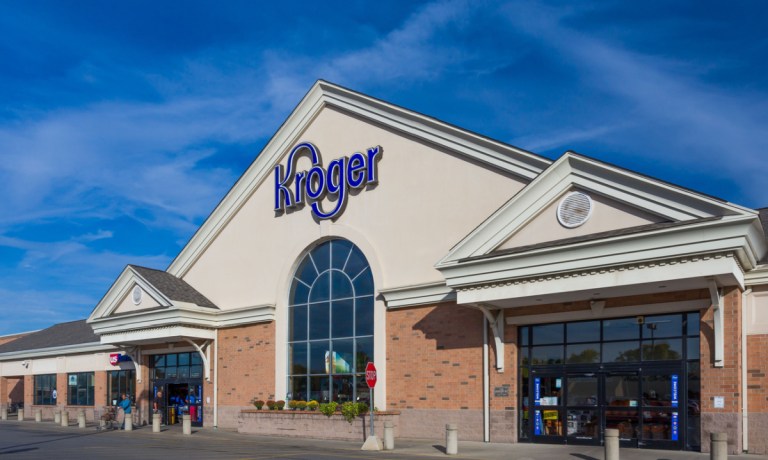
With ongoing financial challenges affecting consumers very differently depending on their financial standing, Kroger is seeing its initiative to improve its private-label offerings prove key to getting more budget-strapped shoppers to keep spending.
On a call with analysts Thursday (June 20) discussing the grocery giant’s first quarter 2024 financial results, CEO Rodney McMullen laid out the differences the retailer is seeing in how various demographics are making purchases.
“As we’ve seen over recent quarters, customers continue to seek value and are shopping with us differently based on their financial situations,” McMullen said.
He noted that “premium and mainstream” consumers continue to spend, with the former group increasing their loyalty and the latter driving new customer growth.
“Within our most budget-conscious households, we are starting to see positive momentum, and we grew households in this segment, after experiencing declines last year,” McMullen stated. “Historic multi-year inflation across the economy, high interest rates and reduced government benefits disproportionately affect these customers and are influencing their spending behaviors.”
Kroger’s interim chief financial officer Todd Foley added that the company’s private-label business “continues to connect” with those budget-conscious shoppers, leading to growth in that area. The grocer touted in a presentation shared with investors Thursday alongside the earnings release that, in the quarter, it added 346 new private-label products, redesigned two of its brands and added new packaging for another.
In the face of inflation, lower-income shoppers are far likelier than their higher-income counterparts to seek lower-priced versions of a product from a given merchant. Supplemental research from the PYMNTS Intelligence study last year “Consumer Inflation Sentiment Report: Consumers Cut Back by Trading Down” found that 42% of consumers who make less than $50,000 a year had switched to purchasing lower quality products due to price increases. In contrast, only 30% of those who make more than $100,000 said the same.
Looking ahead, the grocer is turning to its personalized offers to lead the way for further growth, as consumers demand this kind of targeted discounting.
“Personalization enables us to balance the depth and breadth of our promotions more effectively and encourages customers to engage more with us by focusing on promotions that matter most to them; this led to an 18% increase in digital coupon clips compared to last year,” McMullen said. “Capturing more digital households is a key to our long-term growth model, as these households are more loyal [and] spend nearly three times as much with us.”
He added that their digital engagement in grocery helps to provide valuable data that can be used to boost their adoption of the company’s other offerings such as its health business.
Shoppers, for their part, want personalized offers but are often underwhelmed by the options available. The PYMNTS Intelligence study “Personalized Offers Are Powerful — But Too Often Off-Base,” which drew from a survey of more than 2,500 U.S. consumers, found that 83% of participants were interested in receiving personalized offers, but only 44% of those who receive such offers find that they are very relevant to their needs.
Indeed, Kroger is helped in its rewards program efforts by competitors’ underperformance in the digital loyalty space. The PYMNTS Intelligence study “2024 Global Digital Shopping Index: U.S. Edition,” a collaboration with Visa Acceptance Solutions, drew on insights from a survey of over 2,400 consumers in the United States exploring, among other matters, the omnichannel features that shoppers anticipate in their retail experiences. The results revealed that 54% of grocery shoppers see rewards or loyalty program as a core digital feature, but merchants often fail to offer or publicize these offerings.